How To Make Golden Syrup
This post may contain affiliate links. See my disclosure policy.
If you have a recipe that calls for Golden Syrup and you don’t have it, there’s no need to rush to the store or special order it – this tutorial will show you how to make golden syrup right in your kitchen! Just 3 ingredients, 99% hands off, and it keeps for months!
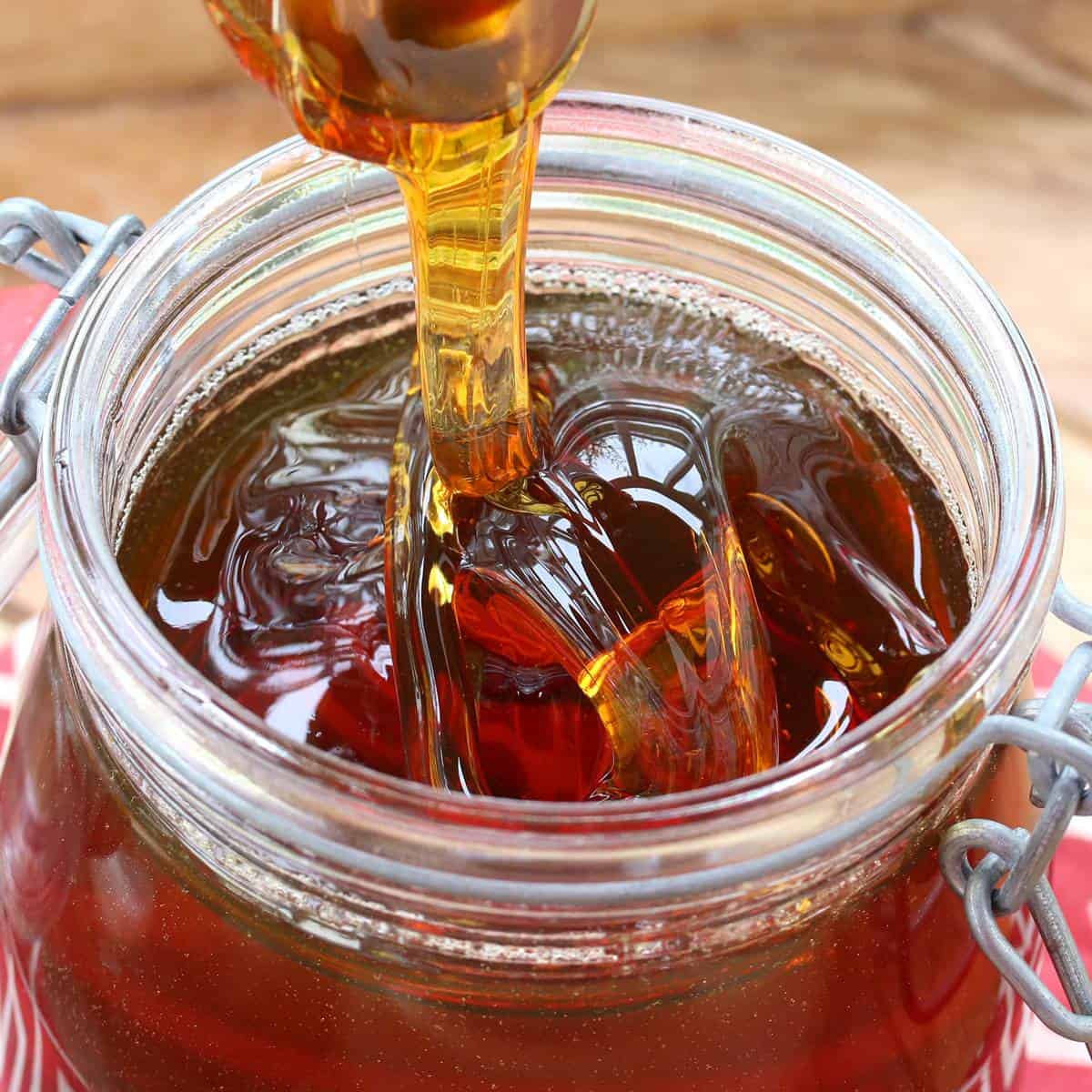
What Is Golden Syrup?
Golden Syrup is something you may not have heard of unless you’re into British baking. But it’s an indispensable ingredient when it comes to making a number of traditional British recipes. And its versatility extends far beyond that (ideas on ways to use it below). Golden syrup (also known as light treacle) is a thick amber-colored inverted sugar syrup comprised of sugar, water and citric acid. It has a deep caramelized, buttery flavor and has been a kitchen staple in Great Britain for over a century. It’s also popular in Australia and New Zealand.
You’ve probably see the the iconic green and gold cans of Lyle’s Golden Syrup. In 2006 it made history when it was entered into the Guinness World Book of Records for having the world’s oldest branding and packaging. The design and appearance of the cans have remained consistent for nearly 140 years.
This syrup is very thick (significantly thicker than corn syrup) and drizzles slowly. In more recent years Lyle’s has also made their product available in squeeze bottles for convenience to use at the table.
Golden Syrup vs. Corn Syrup
They are not the same: the ingredients, the process, the flavor and the texture are different. Golden syrup is made from sugar whereas corn syrup is made from corn and they are made using different processes. Corn syrup (whether light or dark) isn’t as thick and basically tastes like thick sugar water, lacking any depth of flavor (many people, including myself, think its cloyingly, sickly sweet). In contrast, golden syrup is thicker and has very deep caramelized, buttery, and complex flavor notes. There is no equivalent in the U.S. and substituting corn syrup will not yield the same flavor results.
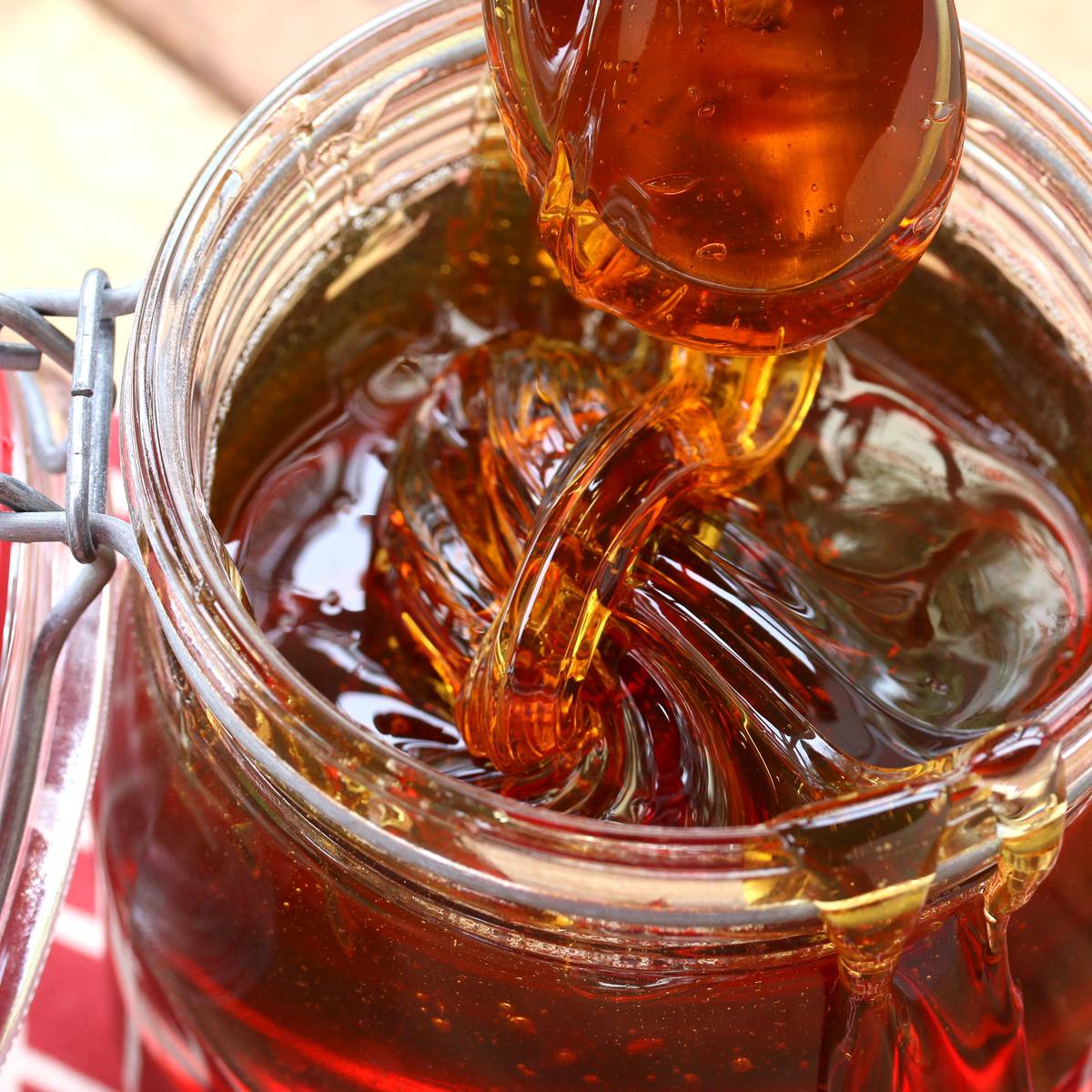
How Do You Use Golden Syrup?
Golden syrup is very versatile and historically has been used in both sweet and savory applications though today it’s mostly used in baking and desserts. Anything that calls for corn syrup can be substituted with golden syrup for a far superior flavor. (As one example, try it in your next pecan pie to take it to a new flavor level!) You can use your homemade golden syrup as a substitute for any liquid sweetener. Here are a few ways you can use it:
- Cookies/Biscuits (ANZAC Biscuits from Australia/New Zealand are a famous and delicious example)
- Fudge, Chocolates and Candies
- Ice Cream & Sorbets
- British Flapjacks
- Brandy Snaps
- Gingerbread (like my English Parkin)
- Treacle Tart and Treacle Pudding
- Butter Tarts
- Drizzled over pancakes, waffles, oatmeal and porridge
- Drizzled over fruit salads or yogurt
- In savory marinades for a touch of sweetness
- Used in place of simple syrup in drinks
- Baked Apples or Baked Pears
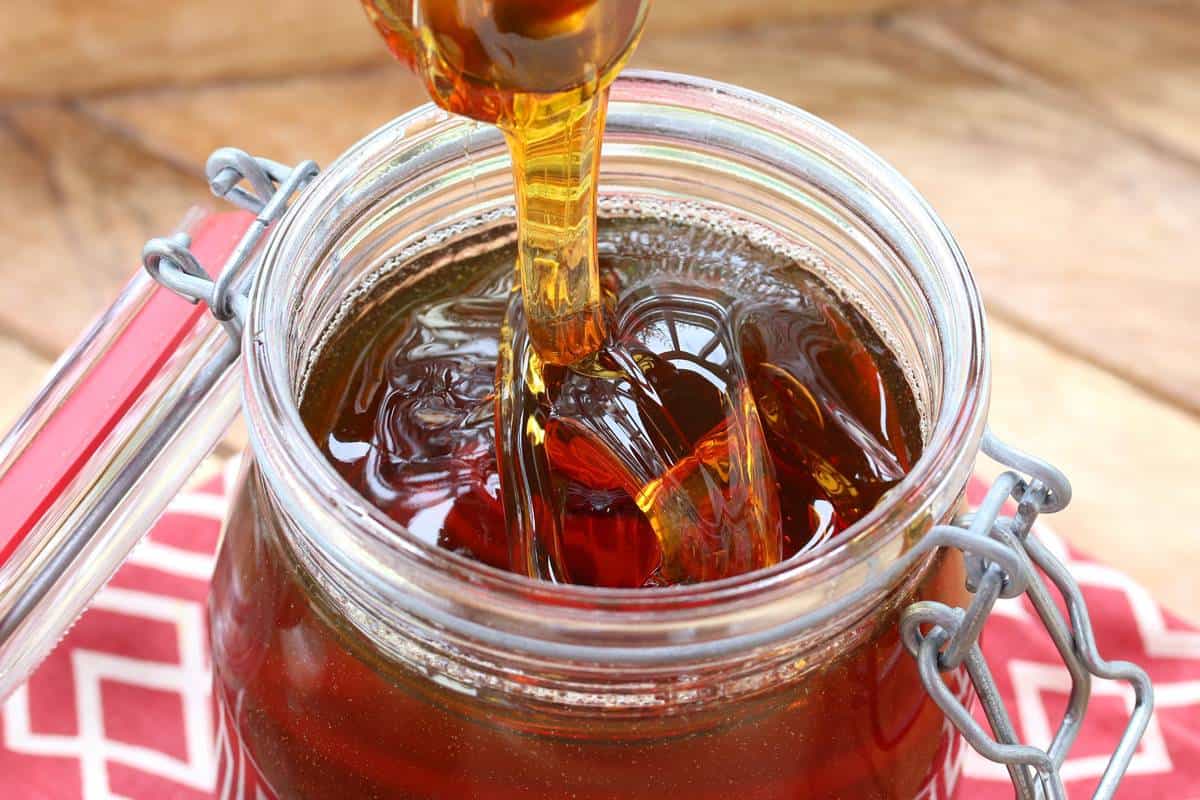
How To Make Golden Syrup
Let’s get started!
This homemade golden syrup recipe is extremely easy to make using just 3 ingredients and is 99% hands off. This recipe makes about 20 ounces (about 3 cups) and don’t worry if you think that’s more than you’ll need for a while because this stuff keeps for several months at room temperature. But if you prefer you can also half this recipe.
Put the sugar and water in a heavy-bottomed saucepan, stir to combine, and bring to a boil, stirring regularly to prevent burning, and stir very gently to avoid splashing the liquid up the sides of the saucepan. Gently stir in the lemon juice.
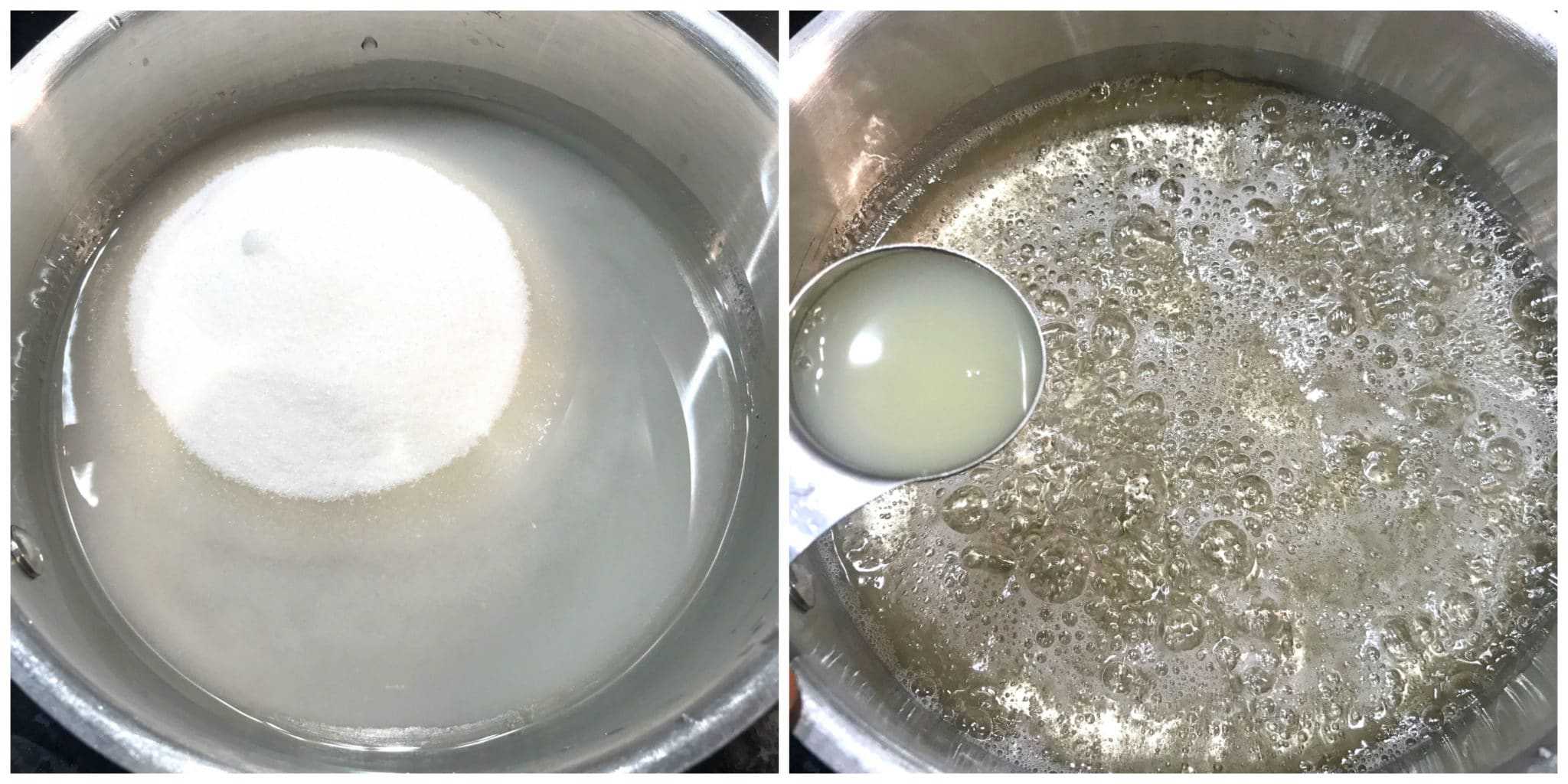
Reduce the heat to a VERY low and gentle simmer (I use “3” on my induction cooktop). Leave the saucepan uncovered. DO NOT STIR the syrup again.
Let it gently simmer until it is a rich amber color. This will take upwards of an hour. Do not increase the heat to rush the process – caramelizing sugar is a low and slow process.
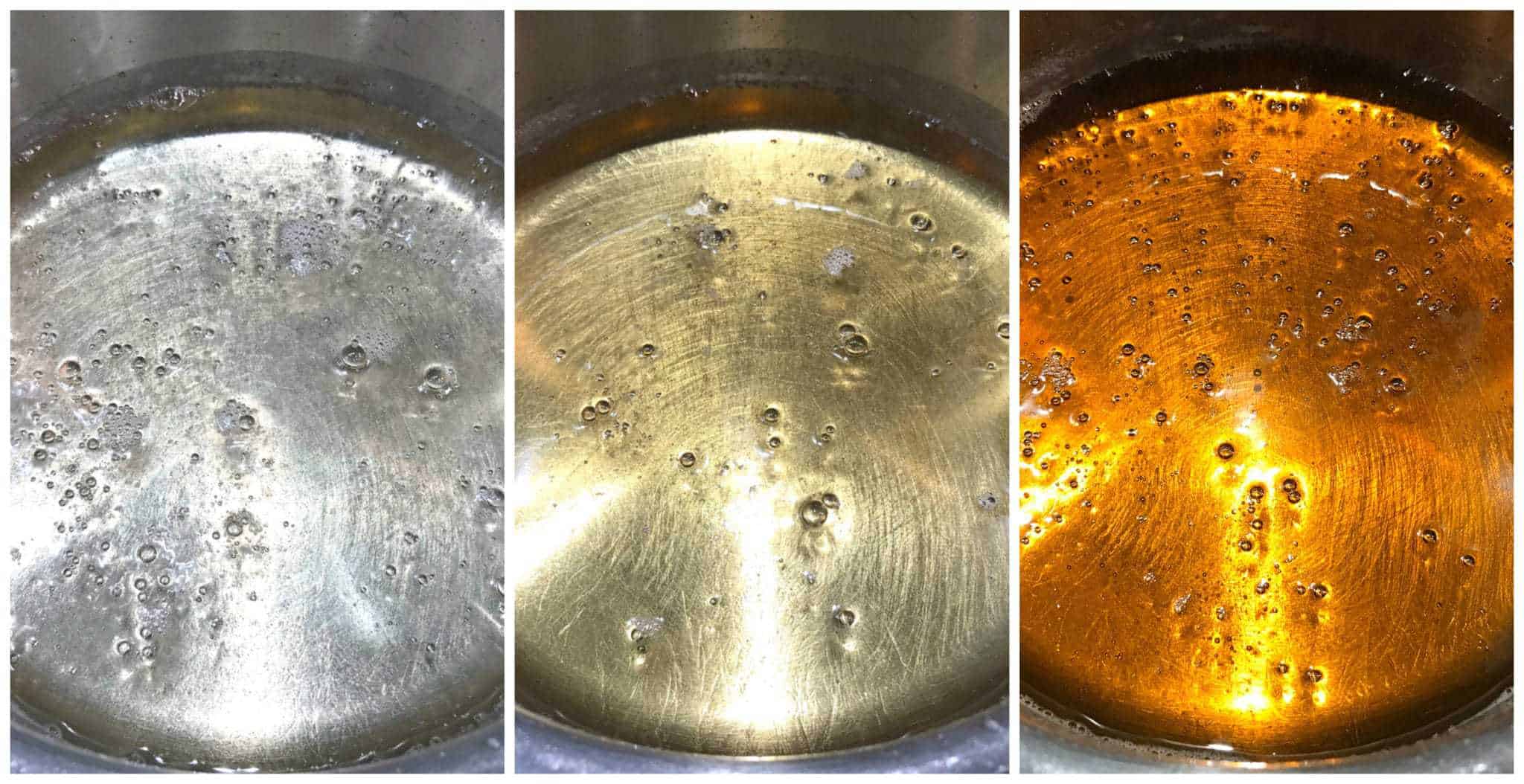
Once the syrup is a rich amber color turn off the heat, let it sit for a few minutes, then pour the hot syrup into a glass jar and let it cool completely before closing the jar with a secure lid.
Note: The syrup will be runny while it’s hot but will thicken as it cools.

Store your syrup at room temperature in an airtight glass jar with a sealable lid. It will keep for many months.
Enjoy!

Save This Recipe
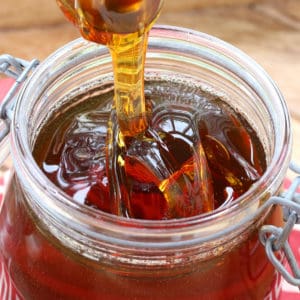
How To Make Golden Syrup
Ingredients
- 1 1/4 cups water (300 ml)
- 4 cups (800 g) cane sugar (for a deeper flavor you can substitute a little bit of brown sugar if desired but will need to use a digital thermometer *see Note)
- 2 tablespoons lemon juice (either fresh or bottled will work but fresh produces a better flavor)
- OR 1/2 teaspoon citric acid (this can be used instead of lemon juice if you wish to avoid a lemon flavor, however it tends to be slightly bitter)
Instructions
- Place the sugar and water in a saucepan and stir to combine. Bring it to a boil, stirring regularly to prevent burning until the sugar is dissolved. Stir very gently to prevent sugar water from splashing up the sides of the saucepan. Once boiling gently stir in the lemon juice or citric acid. Reduce the heat to a very low and gentle simmer (I use "3" on my induction cooktop but this will vary from cooktop to cooktop) Leave the saucepan uncovered. DO NOT STIR the syrup again. Let it simmer on very low for 40-60 minutes or longer until the sugar is a rich amber color. If you're using a thermometer the temperature should be about 240-250 degrees F.Note: If your syrup is too thick and stiff you can reheat it, adding a little bit of water. If your syrup is too runny then you need to let the syrup caramelize longer.
- Turn off the heat, let it sit for a few minutes, then pour the hot syrup into a glass jar and let it cool completely before closing the jar with tight sealing lid.Store your golden syrup at room temperature where it will keep for several months. This makes approximately 3 cups of golden syrup.



















I made homemade marshmallows with this golden syrup. they were wonderful, perfect texture, color and not cloyingly sweet.
Fantastic, Vicki, thank you so much for the feedback!
This worked brilliantly! Thank you. Even at altitude (I live at 7,200 feet). I expected it to need a longer simmering time but at 40 minutes I did the spoon and cold plate test, like when making jam as I don’t have a thermometer, and it was done! Just as good as Lyle’s and made 3 times as much for a third of the price. Especially here in Kenya where it’s an imported item so very expensive. Great!
Fantastic! I’m so happy it was a success, Arabella, thank you very much for the feedback!
Belle recette, merci pour le partage,
Bonne soirée.
Merci, Marijosé! Je suis heureux que tu les aimes! <3
Thank you so much for this recipe.
You’re welcome, Chris, I’m glad you enjoyed it!
I have not yet made this syrup myself, but have been investigating different liquid sugars for use in making desserts and sauces as I despise corn syrup. Adding lemon juice to a sugar-water mix breaks down some of the sucrose into glucose and fructose. Based on my history with candy-making I suspect those that have had issues with it granulating did not have it thoroughly dissolved prior to the simmering process. Even a small amount of granules can cause re-crystallization. Look up the process for making Rock Candy and you’ll understand.
Great recipe! Thanks! How long does this syrup last? Does it need to be refrigerated? And if I raise the heat to 245 will it be thick enough to slice, like caramel?
Thank you, Bre, I’m so glad you enjoyed it! Store it at room temperature and it will keep for many months. No, this won’t be sliceable. Don’t raise the temp or you risk it turning hard like candy.
Can I use regular white sugar instead of cane sugar?
Thank you.
Hi Irina, yes you can. Cane sugar just has a little more flavor depth.
mine turned back granulated after it cooled. what do I do to fix it
Hi Tammy, once the molecules in granulated sugar break down and it turns into liquid it’s irreversible, so I’m assuming you must have used something other than granulated or brown sugar?
The same thing happened with mine, it granulated and solidified. It reached 247° at 43 minutes, I turned off the stove and 3 minutes later I put it in the jars but it started to solidify immediately. I used regular sugar, water; and as I read that Kimberly commented to one person that the lemon could be omitted, so I did not add lemon. Is this why it solidified?
Or is the regular sugar we use not the right one?
In spite of everything it tastes delicious…. Thank you!
I have not yet made this syrup myself, but have been investigating different liquid sugars for use in making desserts and sauces as I despise corn syrup. Adding lemon juice to a sugar-water mix breaks down some of the sucrose into glucose and fructose. Based on my history with candy-making I suspect those that have had issues with it granulating did not have it thoroughly dissolved prior to the simmering process. Even a small amount of granules can cause re-crystallization. Look up the process for making Rock Candy and you’ll understand.
For those who ended up with solidified syrup, it’s likely due to a few residual granules of sugar, or some new crystals that formed. Any sugar crystal in the syrup will provide a starter (edges help crystals form) and set up a chain reaction. Another, less likely possibility is tiny metal particles, so it’s best to use plastic/silicone/wooden implements. If it is crystals, these can form on the sides of the pan, which is why the instructions say not to stir too vigorously.
How to prevent this? The simplest way I have found is, once you are done with adding your acid and are ready to never touch it again until it’s finished, pop a lid on the saucepan, and let it steam up for a while (I do 15 minutes). You want water forming on the sides of the pan, which will dissolve any crystals and wash them into the syrup (so you need enough time to form big drops and then have them run down). All this will delay your caramelization a bit, but with this method I’ve never had syrup or caramel go solid.